Docker Init The Future of Easy Project Initialization
Docker has transformed the landscape of software development, offering a lightweight, portable, and consistent runtime environment that operates seamlessly across various infrastructures. One of Docker’s latest contributions to this evolving landscape is the Docker Init feature, a command-line interface (CLI) command that streamlines the addition of Docker to any project.
Understanding Docker Init
The Docker Init feature should not be confused with the internally used docker-init executable, which is triggered by Docker when utilizing the --init flag with the docker run command. The Docker Init we’re discussing here is a new feature in its beta phase that automates the creation of essential Docker-related assets like Dockerfiles, .dockerignore files, and compose.yaml files.
The Docker Init feature presently supports Go, Node, and Python, with Docker’s development team actively extending support to other languages and frameworks, including Java, Rust, and .NET. This progressive expansion promises to make Docker Init even more useful to a wide range of developers.
Working with Docker Init
To use Docker Init, you’ll need Docker Desktop version 4.18 or later. Once this is set up, you can run the docker init command in your project’s target directory. Docker Init will detect the project’s characteristics and automatically generate the necessary Docker files. This feature is particularly valuable for developers who are new to Docker, those learning about containerization, or developers looking to integrate Docker into their existing projects.
You can read more about how to install Docker Desktop on macOS in my guide “Install Docker Desktop on macOS”.
Docker Init in Action
Let’s take a web server written in Go as an example.
We execute the command to start the process of automatically generating the necessary files to run the application using Docker Compose:
docker init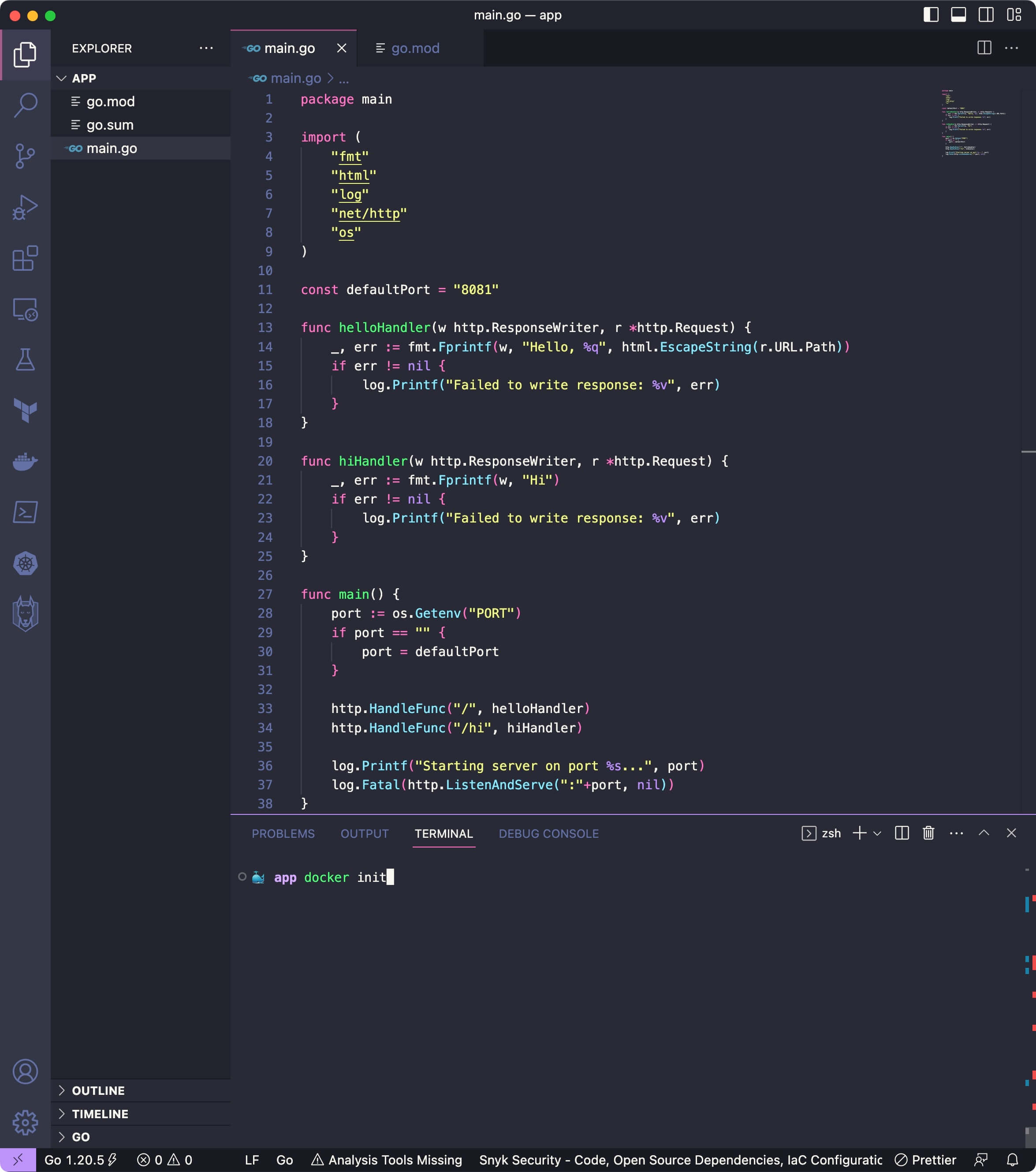
Next, you need to select the programming language in which your application is written.
In this example, we are considering an application written in Go.
Select Go and press the “Enter” button.
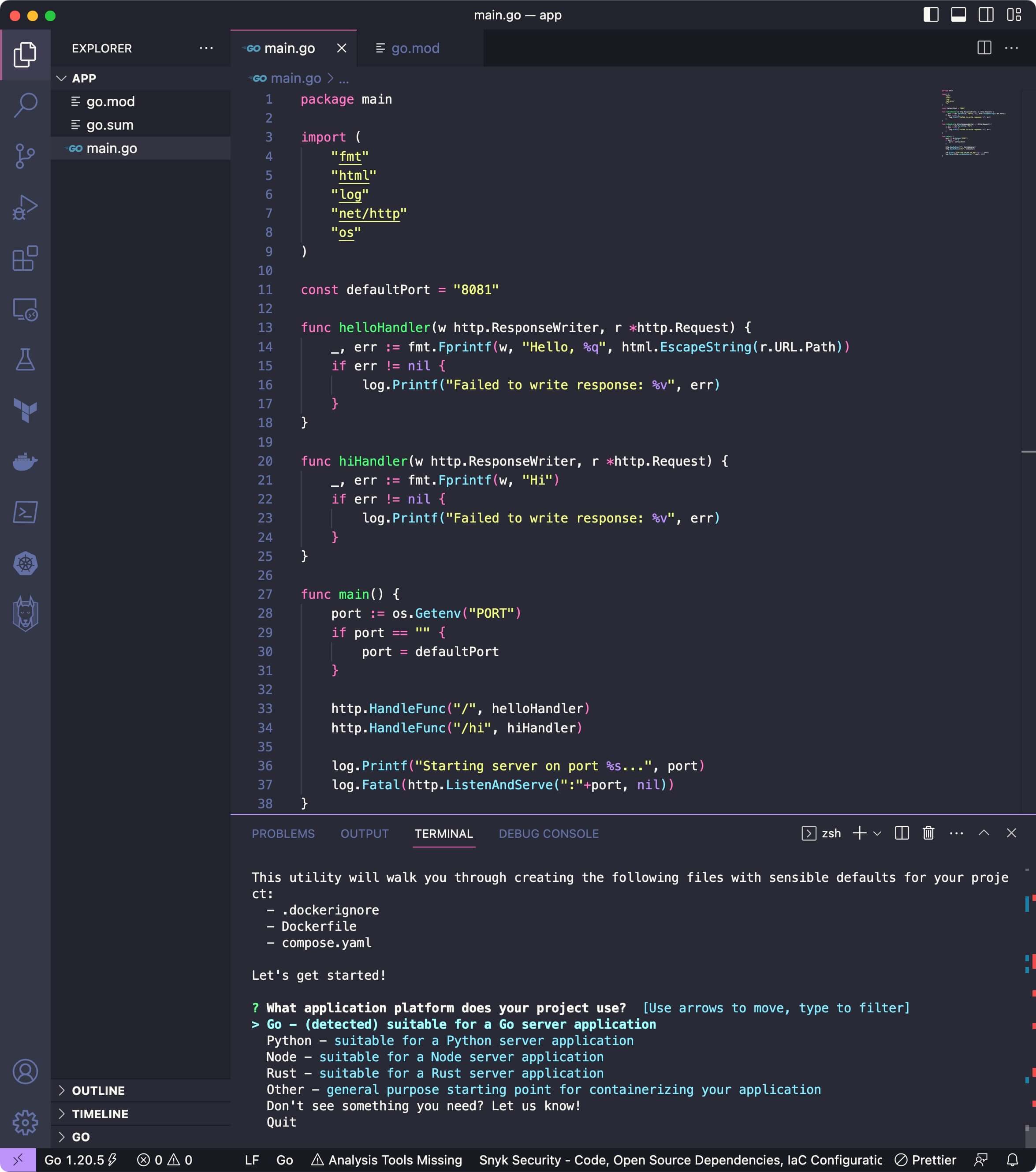
Now you need to specify the installed version of Go.
In this example, we consider working with version 1.20.
You can check the installed version with the command:
go versionSpecify the installed version of Go and press the “Enter” button.
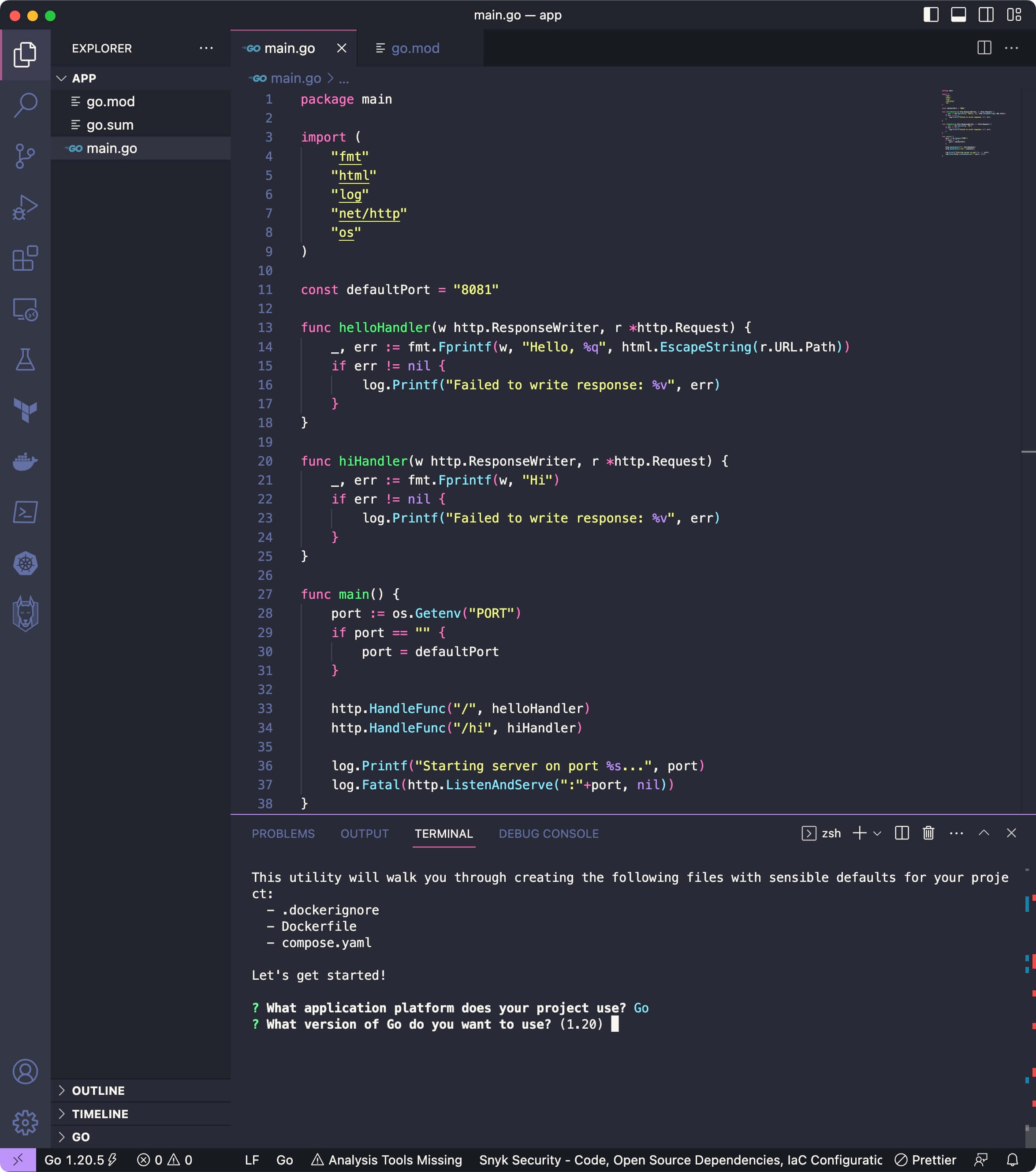
Next, you need to select the project directory in which “main.go” is located.
In this example, “main.go” is in the root directory of the project.
Select the project directory in which “main.go” is located and press the “Enter” button.
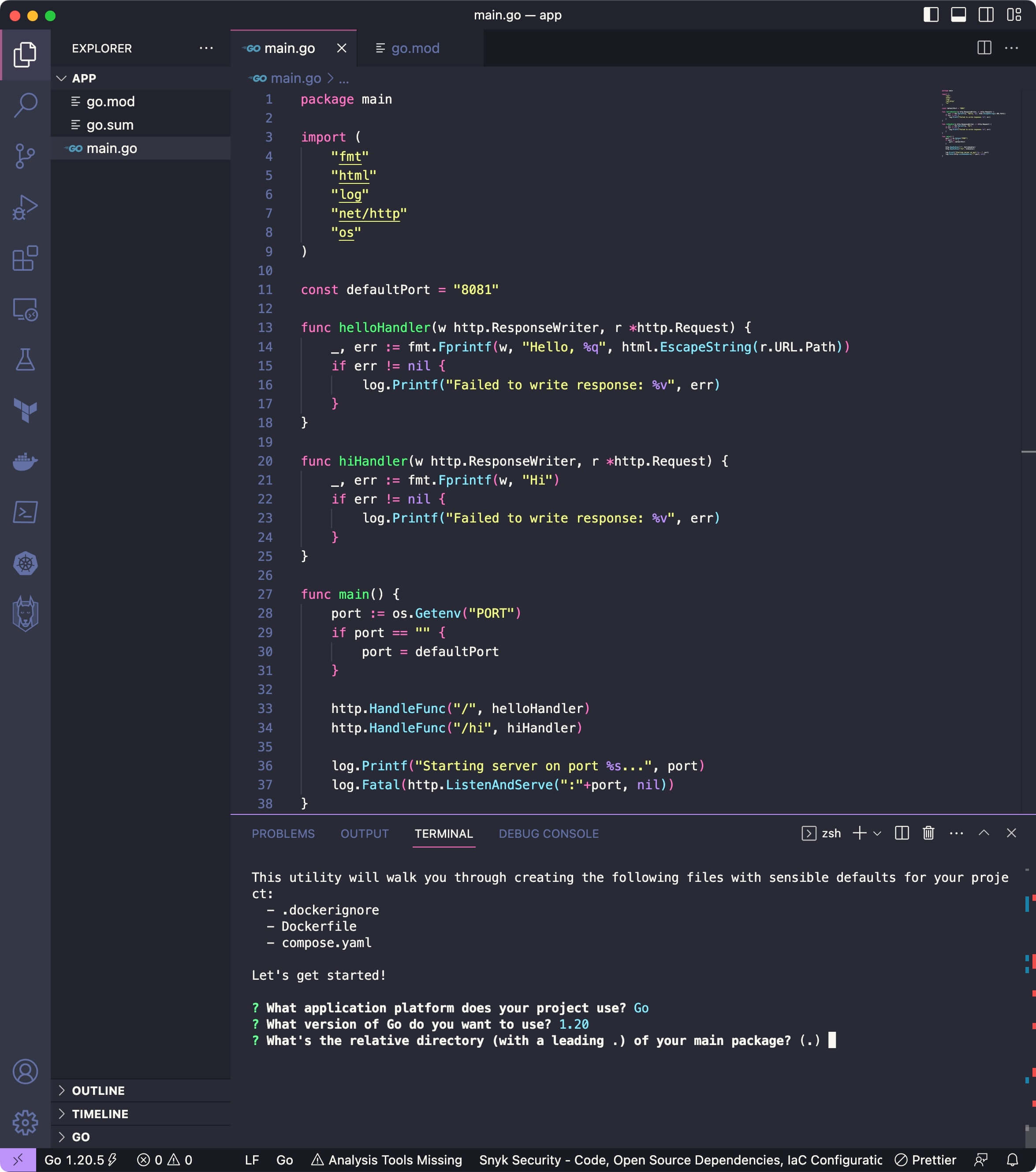
Now you need to specify the port on which the web server is running.
In this example, the web server is using port 8081.
Select the port on which the web server is running and press the “Enter” button.
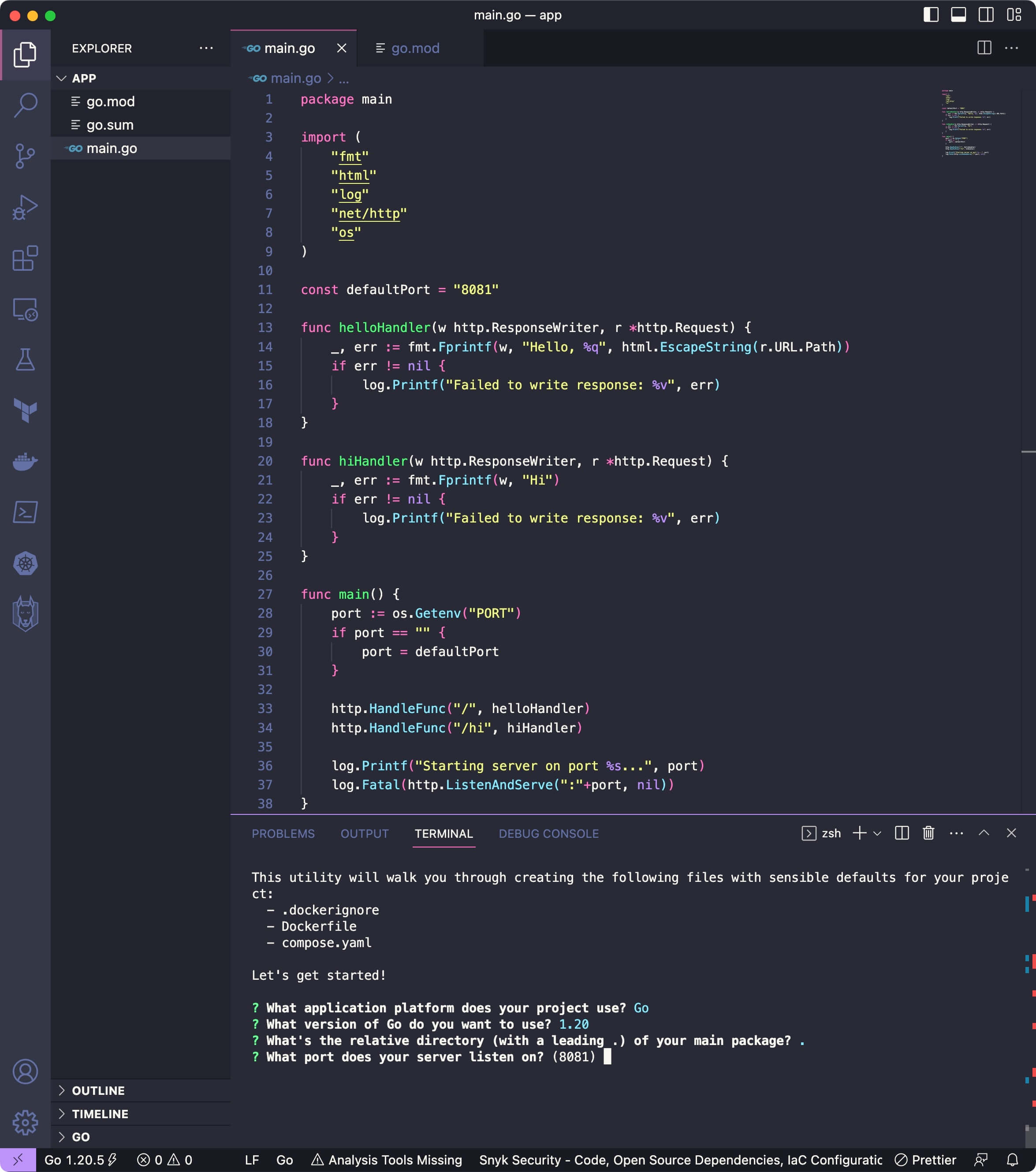
The necessary files to run the application using Docker Compose have been generated.
We start the web server using Docker Compose:
docker compose up --build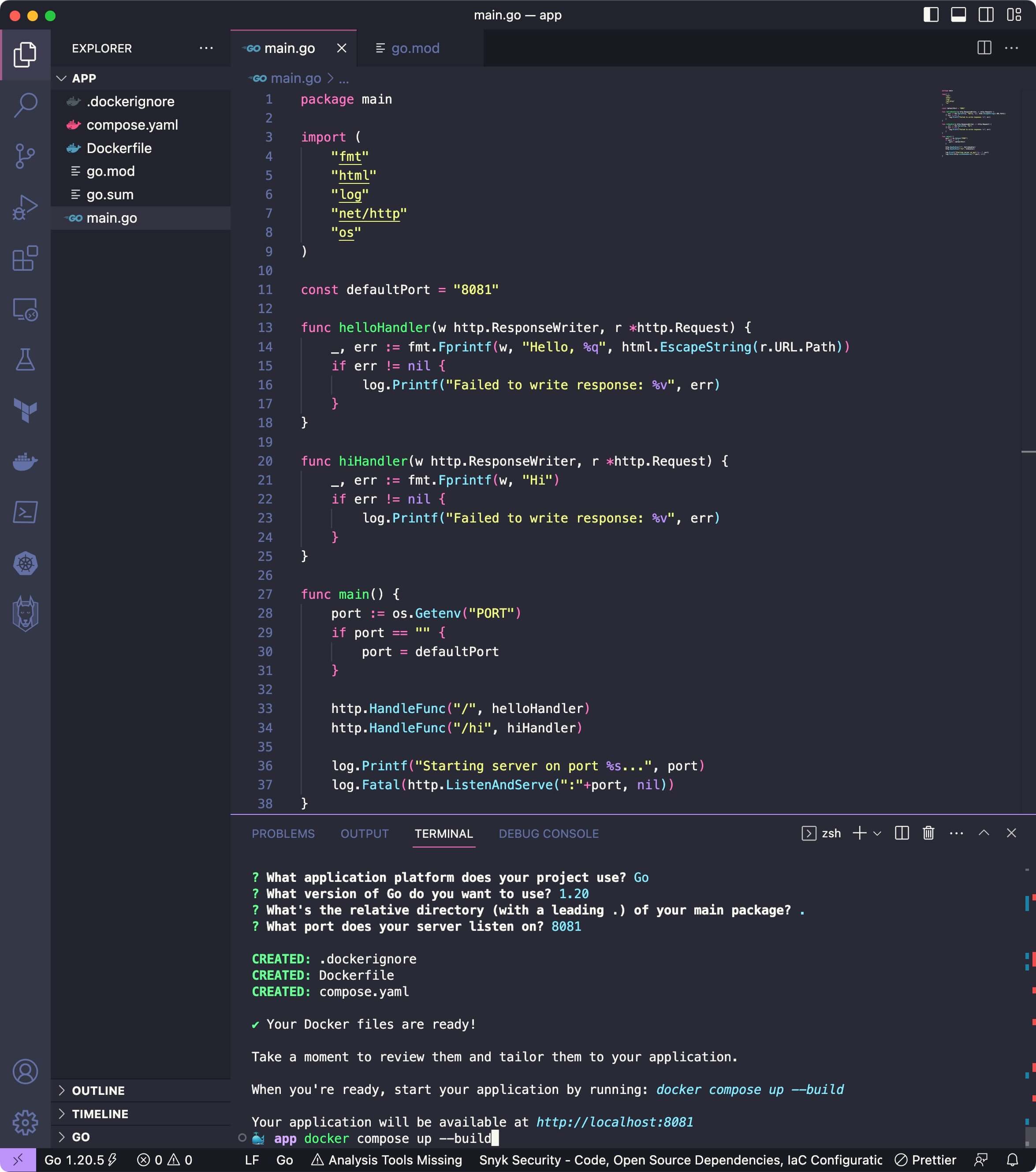
The web server has started and is using port 8081.
Now you can go to http://127.0.0.1:8081 and check if the web server is working.
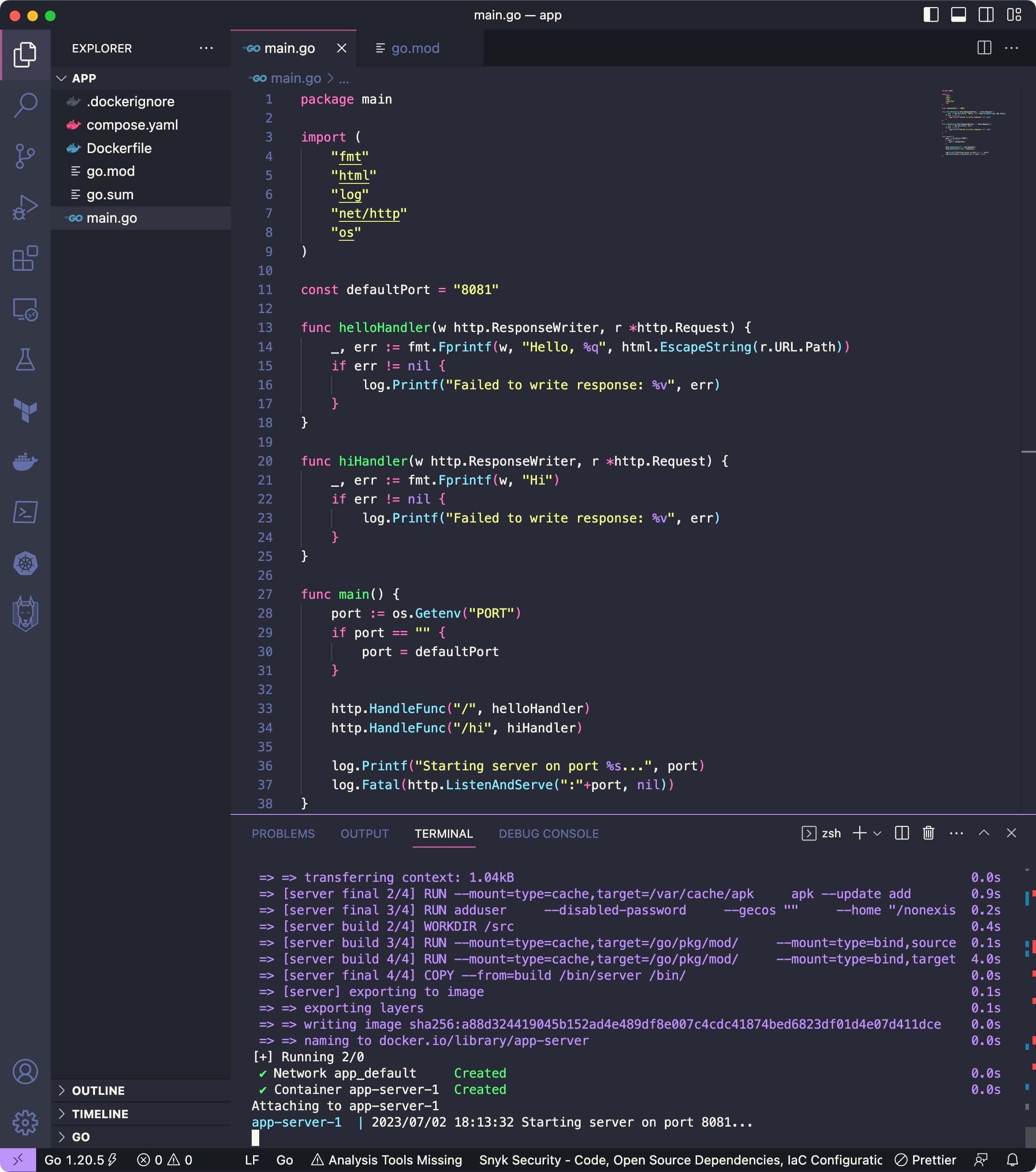
The web server is running.
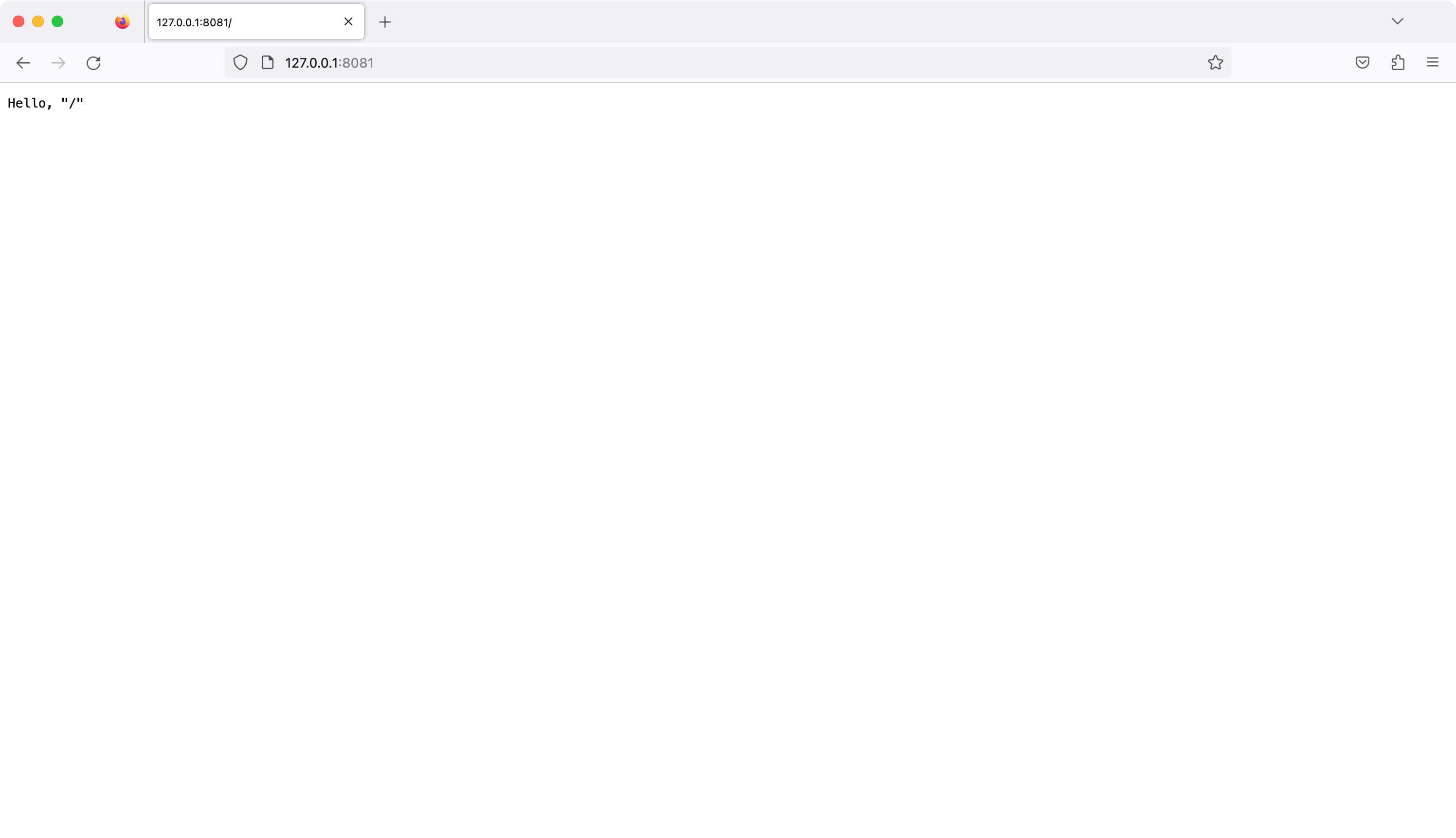
Benefits of Docker Init
Docker Init plays a significant role in automating the creation of necessary Docker assets and standardizing the process across different projects. It allows developers to focus more on the development of their applications, reducing the risk of errors and inconsistencies, and thereby accelerating the adoption of Docker and containerization.
After Docker Init has completed, there may be a need to modify the created files to align them with your project requirements. In such cases, you can refer back to the Docker documentation for further information.
Conclusion
In its beta phase, Docker Init is already showing immense promise as a tool that simplifies the process of incorporating Docker support into developers’ projects. By automating the creation of Docker assets, Docker Init is another step in Docker’s commitment to simplify and enhance the world of software development. As Docker continues to refine and expand this feature, Docker Init is set to become a vital part of Docker’s impressive toolkit.
My Courses
🎓 Dive into my comprehensive IT courses designed for enthusiasts and professionals alike. Whether you’re looking to master Docker, conquer Kubernetes, or advance your DevOps skills, my courses provide a structured pathway to enhancing your technical prowess.
My Services
💼 Take a look at my service catalog and find out how we can make your technological life better. Whether it’s increasing the efficiency of your IT infrastructure, advancing your career, or expanding your technological horizons — I’m here to help you achieve your goals. From DevOps transformations to building gaming computers — let’s make your technology unparalleled!
Refill My Coffee Supplies
💖 PayPal
🏆 Patreon
💎 GitHub
🥤 BuyMeaCoffee
🍪 Ko-fi
Follow Me
🎬 YouTube
🐦 Twitter
🎨 Instagram
🐘 Mastodon
🧵 Threads
🎸 Facebook
🧊 Bluesky
🎥 TikTok
🐈 GitHub
Is this content AI-generated?
Nope! Each article is crafted by me, fueled by a deep passion for Docker and decades of IT expertise. While I employ AI to refine the grammar—ensuring the technical details are conveyed clearly—the insights, strategies, and guidance are purely my own. This approach may occasionally activate AI detectors, but you can be certain that the underlying knowledge and experiences are authentically mine.
